May 21, 2019 feature
3-D grayscale digital light printing (g-DLP) highly functionally graded materials (FGM)
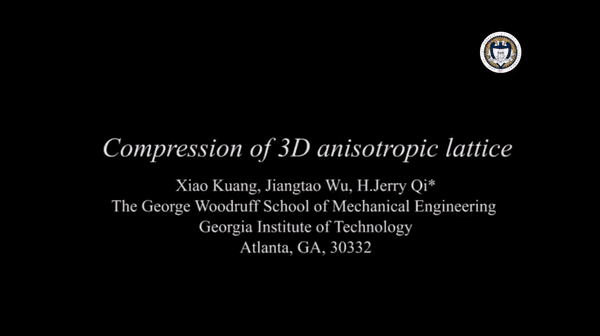
Three-dimensional (3-D) printing or additive manufacture (AM) is a popular technique that has presently attracted tremendous attention as a promising method to revolutionize design and manufacture. Researchers have expanded its applications from rapid prototyping to tissue engineering, electronic devices, soft robotics and high-performance metamaterials, but most 3-D printing techniques only use a single material to print parts or form components using multiple discrete properties with complex mechanical gradients that cannot be cohesively controlled.
Comparatively, most natural structures such as fish scales and tendon-to-bone are made of a variety of materials with markedly different properties that function together. As an alternative, functionally graded materials (FGM) have drawn substantial recent research interest to improve the mechanical robustness and flow tolerance of substrates. This allows for FGM 3-D printing with widely tunable printing properties in a single process, which has increasing importance in materials science.
In a recent study, now published in Science Advances, Xiao Kuang and colleagues at the interdisciplinary departments of Mechanical Engineering, Nanobiomechanics and Advanced Structure Technology in China and Canada presented a single-vat grayscale digital processing (gDLP) 3-D printing method. In the work, they used grayscale light patterns and a two-stage curing ink to obtain functionally graded materials (FGMs) with high resolution and mechanical gradients up to three orders of magnitude. To demonstrate the method, they developed complex 2-D and 3-D lattices with controlled buckling and deformation sequences, metamaterials with a negative Poisson's ratio, presurgical models with varying stiffness, composites for 4-D printing and a method to anti-counterfeit 3-D printing.
3-D printing techniques at a glance
For advanced 3-D printing applications, researchers had demonstrated the PolyJet method with multiple inkjet printheads to simultaneously deposit different materials on the printing bed. However, the method had some notable drawbacks including high equipment cost, rigorous resin requirements, limited material choices and a relatively low resolution multimaterial printing mode.
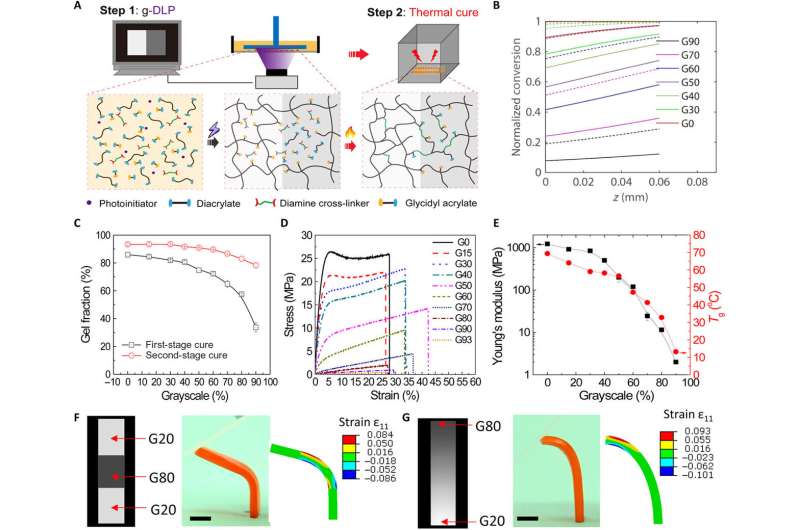
Researchers therefore pursued many other 3-D printing methods including fused filament fabrication and direct ink writing, although these techniques were not pursued further due to slow printing rates. When they used digital light processing (DLP) based on digital micromirror devices (DMDs) as a rapid, high-resolution AM approach, the polymer resins cured abruptly and were too fast in comparison. While methods in the past demonstrated limited capacity to practically manufacture functionally graded materials with tunable properties. In a more recent technique, scientists developed continuous liquid interface production (CLIP) as a true breakthrough to offer the fastest 3-D printing technology close to the production level; also relevant to the present work.
Introducing g-DLP (grayscale digital light printing) to develop digital materials
In the present work, Kuang et al. developed a new, two-stage curing hybrid ink system in a single-vat to achieve grayscale digital light processing (g-DLP) 3-D printing. They synthesized the hybrid ink using bisphenol A ethoxylate diacrylate (BPADA), glycidyl methacrylate (GMA), a diamine crosslinker, n-butyl acrylate (BA), photoinitiators and photoabsorbers. In the experimental setup, they used monochromatic light intensity settings to cure the resin layer-by-layer, analogous to the CLIP technique.
For this, they used an oxygen permeable membrane to separate the cured section from the window for faster printing. The scientists first sliced the designed structure into images corresponding to individual printing layers, followed by processing each image with a MATLAB code to generate the grayscale distribution containing the desired properties. They then passed the images of individual layers with grayscale patterns to the UV projector for printing.
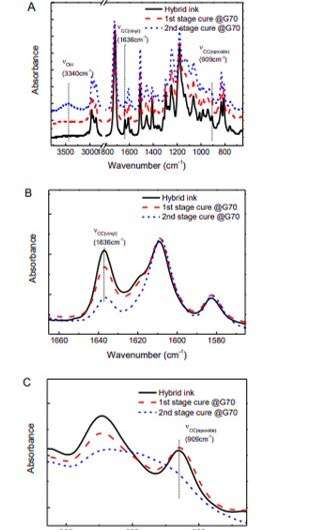
During the experiments they induced radical-based photopolymerization to form the polymer network and printed structure, and showed that the crosslinking density and modulus of the material decreased with increased grayscale percentage. In the work, the GMA monomer and the diamine crosslinker played a critical role in the thermal curing process and determined the effects of grayscale photopolymerization of the hybrid ink.
Kuang et al. showed the method's nonlinear dependence on light intensity and developed reaction kinetics models to examine time-dependent light curation. The scientists prevented light leakage-based resolution reduction in the setup by adjusting the software using an optical system with smaller magnification, or via increased photoabsorber content to improve the resolution of printed materials.
They monitored the chemical structure evolution during photocuration with Fourier Transform Infrared Spectroscopy (FTIR) and tested the mechanical and thermomechanical properties of the materials. Kuang et al. included tests on the Young's modulus and glass transition temperature (Tg) as functions of the grayscale percentage to characterize the new material. Since the method offered the potential to create digital materials by controlling the grayscale, the scientists followed the initial experiments by printing samples of simple geometry with graded properties.
They also used finite element modeling (FEM) simulations to predict the graded properties and deformation rates of the architectures to enable a continuous gradient pattern. This allowed Kuang et al. to manufacture a continuously graded material that bent with continuously changing curvature on application of a point load. The scientists showed that the experimental results agreed with the simulation on single-point bending behavior.
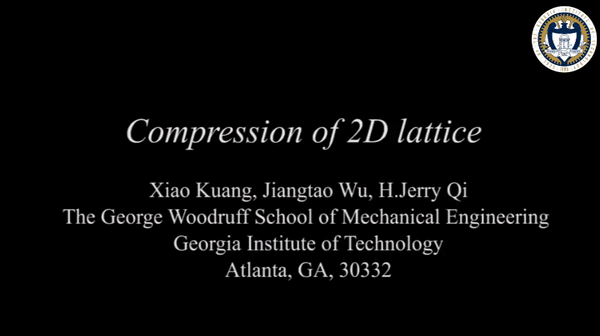
Printing graded metamaterials with g-DLP (grayscale digital light printing) for multifunctional materials
The scientists then used g-DLP to explore the design and fabrication of lattice and cellular structures in the study. For this they first printed a 2-D lattice architecture matrix with a grayscale pattern of a triangular region and a blank space beneath it. During compression studies the deformation only occurred in the triangular region with soft material, where the space under the triangular band did not deform to provide a shield that protected any material under this region. The scientists showed that such controlled buckling could enhance the energy absorption capability – verified using the stable stress drop in the accompanying stress-strain curve. As before, the FEM simulation accurately predicted the experimental results.
Kuang et al. then designed a 3-D lattice architecture, where they assigned each layer with a different grayscale value to obtain a clean, printed lattice with high resolution. The architecture of the 3-D lattice showed sequential deformation behavior – with applications in energy absorption. The scientists can harness the graded material properties of the g-DLP printing technique to manufacture pre-surgical models.
For instance, using the method they printed tissue-like structures with bioinspired mimicry to create bone (with grayscale G0), soft muscle (G85) and skin (G70) structures. They were also able to design a small-scale artificial limb structure with soft muscle (G85) and hard bone (G0), which was printed using the g-DLP method. Kuang et al. propose using the technique to engineer customized architectures with patient-specific physical properties to form presurgical models in tissue engineering for regenerative medicine.
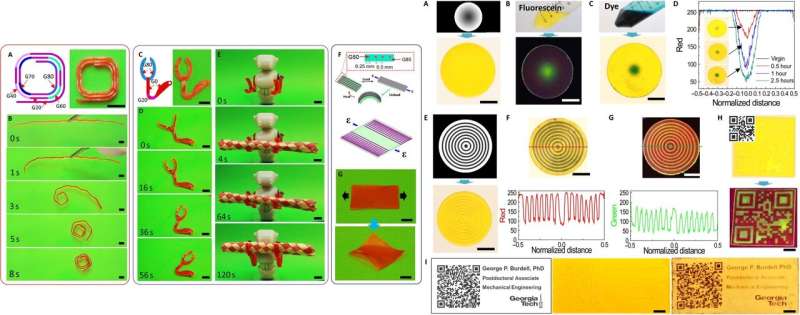
4-D printing shape memory polymers (SMPs) and encryption assisted by diffusion
The g-DLP-printed material could be programmed or tuned across a temperature range (Tg) from 140 C to 680 C for use as a shape memory polymer (SMP), which exhibited actuation at different temperatures. To demonstrate this, they engineered a helical pattern, which when heated to 600 C opened to form a straight line, followed by cooling in ice to reverse to the original conformation. However, if the helical structures were printed with the same grayscale (G20), all hinges recovered their shape simultaneously at the same speed, albeit without shape recovery to the original architecture. The scientists then investigated the applications of such SMPs by developing a robotic arm.
Since the graded materials had different moduli and Tg, this led to different diffusivity in the experimental system. The scientists were therefore able to view the diverse grayscale patterns with a variety of coloring dyes. Kuang et al. propose using fluorescein coloring for encryption and anti-counterfeiting applications. For instance, when the scientists included a QR (quick response) code into a film using grayscale patterning for printing, followed by fluorescein treatment, the pattern only became visible under UV light and invisible under visible light. Furthermore, when Kuang et al. printed a QR code as a grayscale pattern and scanned it using a smartphone, the scientists were able to directly link to the information or site encoded via the internet, preventing counterfeit 3-D products.
In this way, Kuang et al. developed a g-DLP 3-D printing technique via two-stage curing to achieve high-resolution digital manufacture with complex shapes and programmable functional gradients. The scientists aim to optimize constituents in the material for additional printing applications. They were able to directly develop complex 2-D/3-D lattices, metamaterials, 4-D printing with shape memory polymers and produce anticounterfeit techniques that were built-in to the 3-D material itself. The scientists aim to further improve the new g-DLP method to engineer materials for future applications, including 4-D printing metamaterials, biomimetic presurgical models, soft robotics and additive manufacture with ingrained cyber security.
More information: Xiao Kuang et al. Grayscale digital light processing 3-D printing for highly functionally graded materials, Science Advances (2019). DOI: 10.1126/sciadv.aav5790
Sean V Murphy et al. 3-D bioprinting of tissues and organs, Nature Biotechnology (2014). DOI: 10.1038/nbt.2958
Yoonho Kim et al. Printing ferromagnetic domains for untethered fast-transforming soft materials, Nature (2018). DOI: 10.1038/s41586-018-0185-0
Journal information: Science Advances , Nature Biotechnology , Nature
© 2019 Science X Network





















